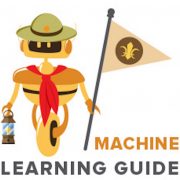A good proof of the importance of the HCI-KDD approach, worth: 2,1 Billion USD !
Our strategic aim is to find solutions for data intensive problems by the combination of two areas, which bring ideal pre-conditions towards understanding intelligence and to bring business value in AI: Human-Computer Interaction (HCI) and Knowledge Discovery (KDD). HCI deals with questions of human intelligence, whereas KDD deals with questions of artificial intelligence, in particular with the development of scalable algorithms for finding previously unknown relationships in data, thus centers on automatic computational methods. A proverb attributed perhaps incorrectly to Albert Einstein illustrates this perfectly: “Computers are incredibly fast, accurate, but stupid. Humans are incredibly slow, inaccurate, but brilliant. Together they may be powerful beyond imagination” [1].
An article published on February, 18, 2018 by David Shaywitz [2] from Forbes reports on the recent purchase of the oncolology data company Flatiron Health for the enormous sum of 2,1 Billion USD (remember: Deep Mind was purchased by Google for a mere 400 million GBP 😉
This supports a few hypotheses which I try to convince my students all the time (but they won’t believe me unless Google is doing it 😉
a) those who can turn raw health data into insights and understandable knowledge can produce value
b) data – and particularly big data – is useless for the decision maker, what they need is reliable, valuable and trustworthy information
c) for the complexity of sensemaking from health data we (still) need a human-in-the-loop: Humans (still) exceed machine performance in understanding the context and explaining the underlying explanatory factors of the data
d) consequently this is a good example for the business value of our HCI-KDD approach: Let the computer find in arbitrarily high-dimensional spaces what no human is able to do – but let the human do what no computer is able to do: BOTH working together are powerful beyond imagination!
Flatiron Health [3] is a company which is specialized on health data curation, supported by technology of course, but mostly done manually by human experts in the Mechanical Turk style. Remark: The name mechanical turk has historic origins as it was inspired by an automatic 18th-century chess-playing machine by Wolfgang von Kempelen, that beats e.g. Benjamin Franklin in chess playing – and was acclaimed as “AI”. However, ti was later revealed that it was neither a machine nor an automatic device – in fact it was a human chess master hidden in a secret space under the chessboard and controlling the movements of an humanoid dummy. Similarly, services which help to solve problems via human intelligence are called “Mechanical Turk online services”.
[1] Holzinger, A. 2013. Human–Computer Interaction and Knowledge Discovery (HCI-KDD): What is the benefit of bringing those two fields to work together? In: Cuzzocrea, Alfredo, Kittl, Christian, Simos, Dimitris E., Weippl, Edgar & Xu, Lida (eds.) Multidisciplinary Research and Practice for Information Systems, Springer Lecture Notes in Computer Science LNCS 8127. Heidelberg, Berlin, New York: Springer, pp. 319-328, doi:10.1007/978-3-642-40511-2_22










